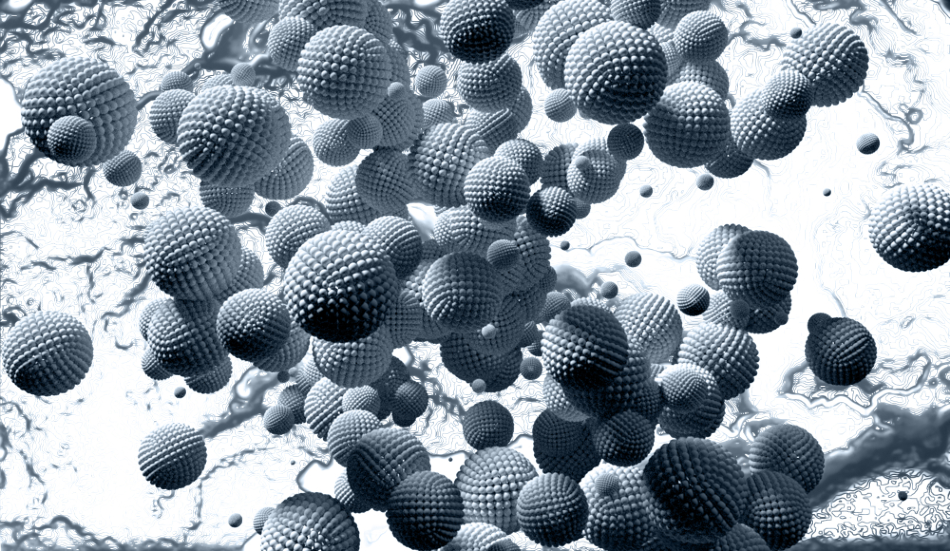
Image Credit: GiroScience/Shutterstock.com
Our body’s neural cell responses do not depend solely on electrical and chemical stimuli, which are relatively easier for analysis. Scientists have often found difficulty in studying the body’s neural responses owing to the mechanical triggers, for example, pressure or vibration, because of the lack of a well-regulated and simplified method.
In a magnetic field, the nanoparticles can act as dynamic transducers for the distal analysis of cellular functions. This article discusses the significance and advantage of the discovery of magnetic nano-discs in the study of neural responses.
A team of researchers at MIT and elsewhere has published its findings in the journal ACS Nano about its discovery of magnetic nano-discs, a novel approach for the study of neural responses.
Polina Anikeeva, a member of the research team and an Associate Professor in the Departments of Materials Science and Engineering and Brain and Cognitive Sciences, said that their research in the development of magnetic nano-discs has been a cumulative work of several disciplines, including chemistry (electromagnetic effects), and biology (neurostimulation).
Characteristic Features and Development of Magnetic Nano-Discs
When these nano-discs are introduced to a specific kind of varying magnetic field, they begin to flutter. These nano-discs are approximately 100 nm in size or a hundredth of the size of the neurons (dorsal root ganglion).
In the absence of external magnetic fields, these nano-discs contain a vortex configuration of atomic spins. This makes the nanoparticles act as if they do not contain any magnetic properties and make them extremely stable in solutions.
The vortex configuration of spins provides quick control over the direction of magnetization and magnitude. When these minuscule discs are introduced to a fragile magnetic field (few millitesla) with a low frequency (several hertz), the particles switch to a state where the internal spins are all aligned in the disc plane. This is why the nano-discs flutter up and down along the direction of the magnetic field.
The research team developed a disc-shaped particle from hematite, a benign iron oxide. The hematite was then converted into magnetite.
Magnetite imparts two fundamental properties to the nano-discs:
- The magnetic properties
- Benign in the body
The chemical reaction involved in the conversion of hematite to magnetite drastically changes a blood-red tube of nanoparticles to jet black.
Find out more about nanoparticle characterization equipment
Magnetic Nano-Disc – A New Avenue for Neural Research
In the study of the neural response to the mechanical forces, the research team targeted a specific group of neurons, i.e., the dorsal root ganglion. This group of neurons forms an interface between the peripheral and central nervous systems. The researchers selected this particular group of nerve cells because of their high sensitivity towards mechanical forces.
Although the technology is similar to the techniques related to bioelectric medicine, there are quite a few dissimilarities. The use of conventional magnetic nanoparticles typically requires large magnetic fields to be activated, which lack precision and could damage neural cells. Therefore, the researchers faced difficulty in finding a material that offers sufficient force with minimal magnetic activation. The development of a novel magnetic nano-disc proves to be the answer to existing problems.
When these magnetic nano-discs are injected in a large quantity, they can collectively trigger the cell’s pressure receptor, i.e., the cells can detect the mechanical force produced by the nanoparticle and respond to it.
Major Advantages of the Use of Magnetic Nano-Discs
Neurostimulations are typically carried out using either chemical pathway (using pharmaceuticals) or electrical pathway, where the patient’s body is subjected to varying voltage using wires.
The new approach, i.e., the use of magnetic nano-discs, would be contact-free after an initial injection of the particles. After the injection, the patient can be monitored easily by subjecting him/her to a magnetic field, as the particles would be activated instantaneously.
The researchers believe that many new kinds of therapeutic treatments could be designed using magnetic nano-discs. The new system has been developed in such a way that it would not require any wire or drugs after an initial injection of the particles. The injected nano-discs could be reactivated at will through an external applied magnetic field.
Researchers claim that their work is still in its infancy. However, they remained optimistic about the newly developed particle. They believe that the magnetic nano-discs could transduce abundant forces to the neural membranes for their stimulation.
The research has opened a new avenue for the study of the nervous system. The key properties of the disc-shaped magnetic nanoparticles, i.e., magnetic vortex, colloidal stability, and large magnetic torques, could aid in the basic research of mechanoreception and its applications in the regulation of electroactive cells with distal magnetic incitements.
Scientists envision that their approach could be used to study a nerve cell that responds to mechanical forces and modulate any dysfunction of particular organs. The outcome of the research has also paved the way for bioelectronic medicine, which aims to provide stimulation to specific parts of the body or individual organs, without using drugs or electrodes.
References and Further Readings
Gregurec, D. et al. (2020) Magnetic Vortex Nano-discs Enable Remote Magnetomechanical Neural Stimulation. ACS Nano, 2020. https://doi.org/10.1021/acsnano.0c00562
Chandler, D. (2020) A mechanical way to stimulate neurons: Magnetic nano-discs can be activated by an external magnetic field, providing a research tool for studying neural responses. [Online] MIT News. Available at: http://news.mit.edu/2020/neural-cell-stimulation-magnet-0720 (Accessed on 19 August 2020).
Disclaimer: The views expressed here are those of the author expressed in their private capacity and do not necessarily represent the views of AZoM.com Limited T/A AZoNetwork the owner and operator of this website. This disclaimer forms part of the Terms and conditions of use of this website.